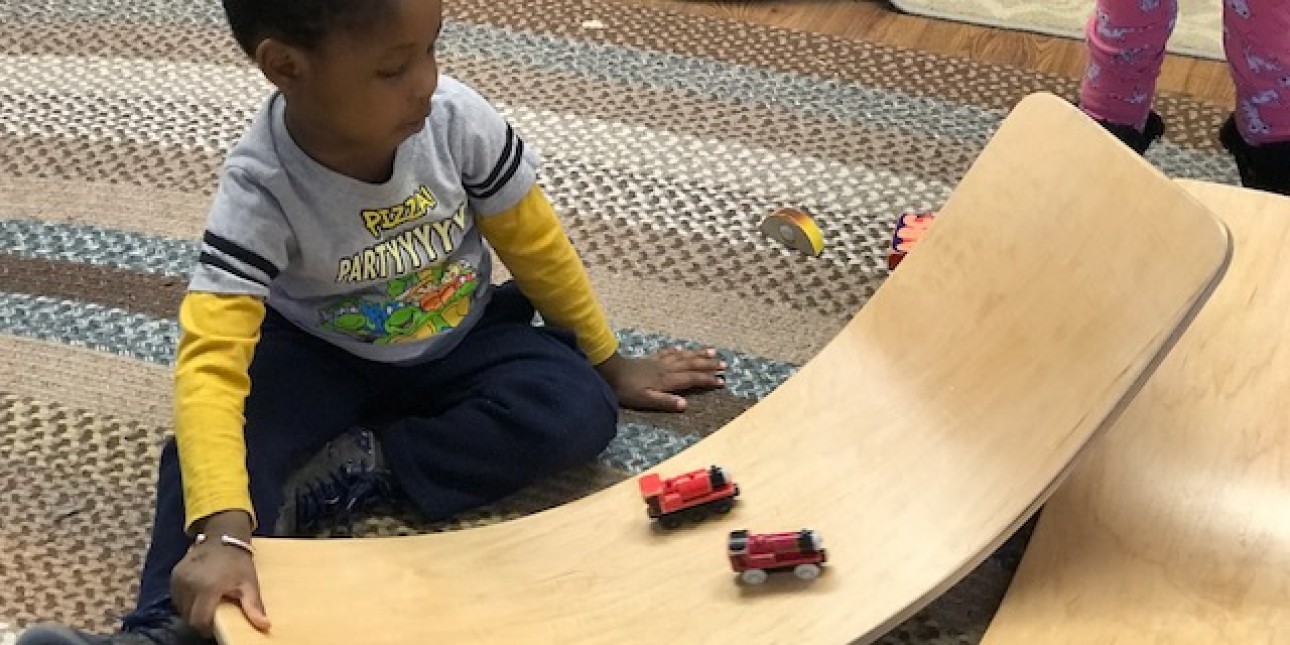Deb's March Message

FULL STEAM AHEAD
March 2018
The research is quite clear that the best practice in early childhood education is to break away from passive instruction and allow for more play and investigation, and this kind of learning early in life builds skills and interests that serve children throughout their school years and lives.
Children are naturally curious about the world around them, always asking, “What is that?” “Why?” and “How does that work?” Their curiosity leads them to explore their environment, problem-solve, invent, and discover new things. It is through play that young children are able to engage in this learning process. There has recently been a strong focus on assuring that STEAM activities are part of the early childhood curriculum.
STEAM stands for Science, Technology, Engineering, Arts, and Math.
ALL of these happen every day in a high quality early childhood environment.
SCIENCE is observing, making predictions, experimenting, asking questions and wondering how things work. TECHNOLOGY is being inventive, using a variety of simple tools like crayons and rulers, and more complex ones like microscopes and computers. ENGINEERING is problem solving, testing materials, designing, creating and building. ARTS is open-ended and creative exploration of a diversity of materials. MATH is patterning, sequencing, exploring shapes, numbers, volume, and size.
Early experiences and learning shape the development of a child’s brain.
The earlier that adults guide and support children’s wonder about their world, the more likely it is that children will experience positive development.
At PIC, our classrooms are well-equipped with a diversity of materials that lend themselves so beautifully to STEAM related activities. Tried and true early childhood materials such as wooden blocks, Legos and Magna Tiles all foster skills in sorting, stacking, symmetry, measurement, comparison, balance, as well as scientific reasoning and problem solving.
Recently, through a grant from the Teri Lynne Lokoff Foundation and private funding from a strong PIC supporter, we were able to purchase some additional materials for our shared spaces that focus on STEAM.
Curvy Boards are simple wooden pieces of equipment that children use as balancing boards, bridges, see-saws, boats and rocking cradles. Our new Magnet Walls allow children to examine slope, cause & effect, momentum and gravity through hands on vertical experimentation. We have one currently set up in our A-Z room and will be setting up another soon in our lower level outdoor courtyard space. Classroom iPads are allowing classrooms to conduct research on topics they are learning about, as well as giving children opportunities for drawing and writing using this new tool. Classroom light tables are leading to all kinds of color, light and optic exploration activities.
Along with these old and new materials and activities, we continue our use of loose parts every day in our classrooms to explore all aspects of STEAM. Children use egg cartons to sort small rocks and shells. They build with corks, popsicle sticks and metal parts. They use lace and stones on the light tables. The list of the creative uses of loose parts is simply endless!
The focus on STEAM in early childhood research and literature may be new, but at PIC, our children have been exploring STEAM related activities for many, many years. STEAM is all related to hands-on experiences and play, and that is what we have done for 40 years!
Thank you for entrusting your children in our care.